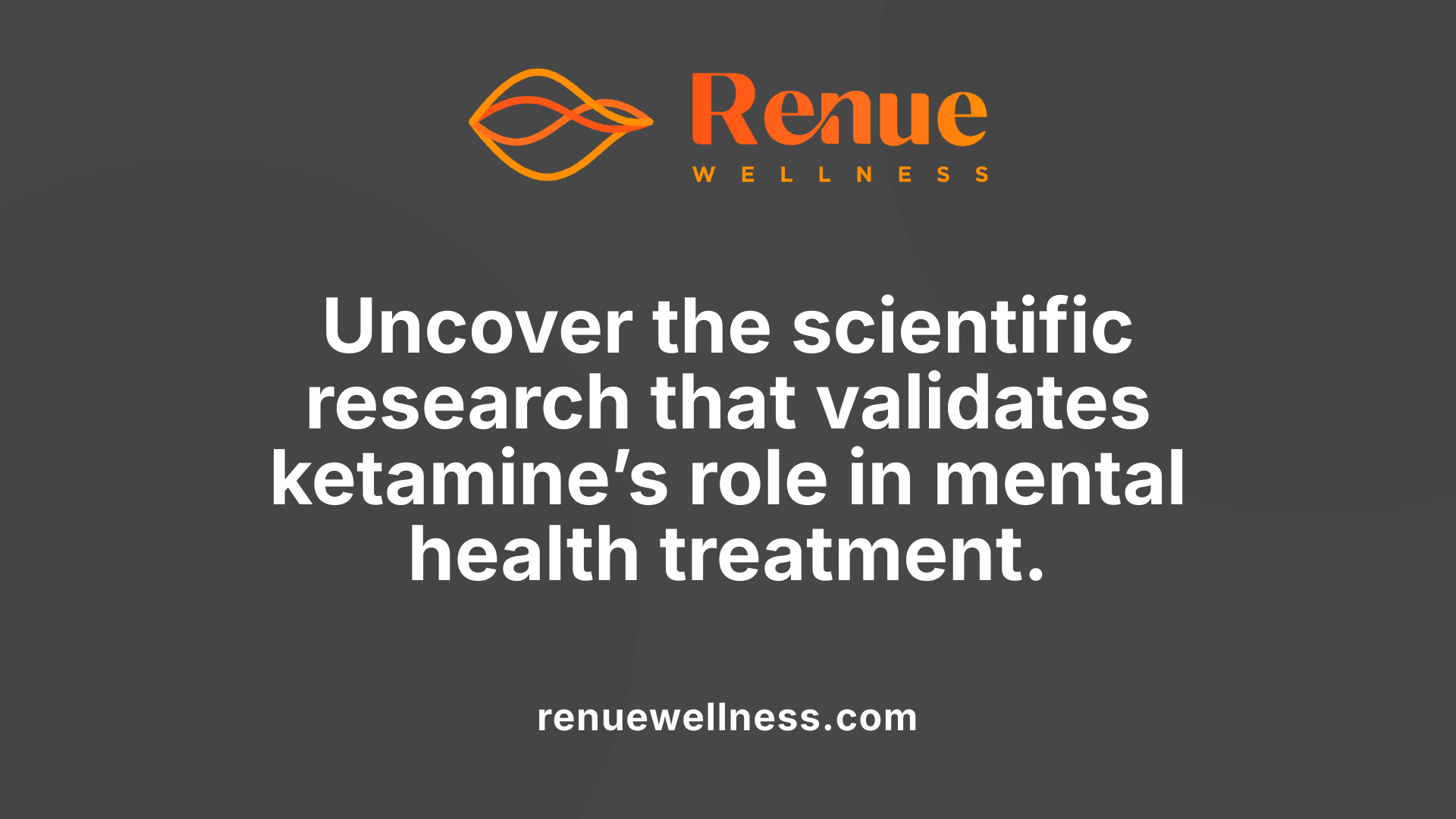How Ketamine Gives People Hope When Nothing Else Has Worked


July 29, 2025
A New Dawn for Treatment-Resistant Depression
For many individuals battling severe depression that resists traditional therapies, hope can seem distant. Yet, recent breakthroughs with ketamine therapy have begun to transform this narrative. By targeting the brain's glutamate system in novel ways, ketamine offers rapid relief and renewed optimism for those who have exhausted all other options. This article explores the scientific foundations, therapeutic benefits, safety considerations, and inspiring patient stories that highlight how ketamine is changing lives.
Understanding How Ketamine Works in the Brain

What is the scientific basis supporting ketamine's effectiveness for mental health issues?
The scientific foundation for ketamine’s efficacy in mental health treatment primarily revolves around its impact on the brain’s glutamate system and its ability to promote neuroplasticity. Unlike traditional antidepressants that target serotonin or norepinephrine pathways, ketamine acts on the NMDA receptors, which are critical for synaptic transmission and neural plasticity. Its antagonistic effect on NMDA receptors leads to an increase in glutamate release, which stimulates the formation of new neural connections.
Extensive research, including systematic reviews and meta-analyses, show that ketamine produces rapid symptom relief, often within hours, especially in resistant cases of depression. For example, the Bio-K study demonstrated significant reductions in depressive symptoms with remission rates around 52%. These effects are thought to be supported by molecular mechanisms involving brain inflammation markers, mitochondrial function, and the strengthening of synaptic connections.
Decades of clinical and neurobiological research have underpinned these findings. Notably, Yale research in 2000 first established the rapid antidepressant properties of ketamine, and subsequent studies have confirmed its ability to alter neural pathways swiftly. Ongoing biomarker research aims at predicting individual responses, further solidifying its role as a scientific breakthrough in mental health care.
What are the therapeutic benefits and safety considerations of ketamine therapy?
Ketamine therapy has shown remarkable effectiveness, particularly using FDA-approved esketamine (Spravato), for rapid relief of depression and suicidal ideation. Administered under stringent medical supervision, ketamine provides symptomatic improvement often within hours or days, a stark contrast to traditional antidepressants that can take weeks.
The benefits include alleviating symptoms resistant to standard treatments, reducing feelings of emotional weight, and facilitating emotional healing by helping patients access buried emotions in safe settings. Its rapid action offers hope to individuals experiencing severe depression, anxiety, PTSD, and related conditions.
However, safety considerations are crucial. Potential side effects include dissociation, increased blood pressure, cognitive disturbances, and, with repeated use, concerns about cognitive impairment or bladder issues. There exists a potential for misuse outside of clinical settings due to its psychoactive effects. Therefore, ketamine treatment is strictly monitored by healthcare professionals to minimize risks and ensure safety.
How does ketamine serve as an innovative treatment option for those unresponsive to traditional methods?
For patients who do not respond to conventional approaches, ketamine offers an innovative alternative that acts quickly and effectively. Its unique mechanism targeting the glutamate system leads to the rapid formation of new neural pathways and synapses, unlike traditional treatments that focus on neurotransmitters like serotonin.
The availability of esketamine nasal spray, which can be administered outpatient, enhances accessibility and offers a non-invasive option. Clinical trials have shown that many individuals experience significant symptom reduction after just a few infusions, providing an essential lifeline for those with treatment-resistant depression.
This paradigm shift is fueled by its ability to bypass dysfunctional neural circuits and directly promote neuroplasticity, restoring neural connectivity and emotional stability where other therapies have failed.
How does ketamine provide hope for individuals with treatment-resistant depression?
Ketamine’s ability to produce rapid, sustained improvements creates a beacon of hope for those who have not benefited from traditional therapies. Its mechanism initiates a cascade involving the disinhibition of glutamate, activation of AMPA receptors, and downstream signaling pathways such as BDNF and mTOR, which facilitate the growth of new synaptic connections.
These neuroplastic changes counteract the synaptic deficits caused by chronic stress and depression, allowing the brain to “reset” and regain emotional resilience. Many patients report feeling a lifting of emotional weight and a renewed sense of possibility shortly after treatment.
Additionally, ketamine’s effects on reducing suicidal ideation dramatically improve safety and quality of life, offering relief in critical moments when conventional options may be too slow.
What patient experiences and success stories highlight ketamine's impact?
Real-world stories underscore ketamine’s transformative potential. Denise, suffering from bipolar disorder and PTSD, maintained stability for over three years post-treatment, avoiding hospitalizations and electroconvulsive therapy.
Ronna experienced a significant decline in depression and suicidal thoughts after six infusions, with benefits lasting nearly a year. Josh, overwhelmed by anxiety and panic, noticed a remarkable shift that improved his relationships and outlook.
At clinics like Emerge Ketamine, patients with treatment-resistant depression and chronic pain have reported full remissions and even physical improvements, such as regaining mobility in cases of complex regional pain syndrome.
These narratives demonstrate how ketamine’s rapid relief can dramatically enhance quality of life, emotional flexibility, and hope.
What role does ketamine play in alleviating suffering and improving quality of life for treatment-resistant cases?
By providing swift and effective symptom relief, ketamine has revolutionized the management of severe and resistant depression. Studies utilizing quality of life scales reveal large effect sizes indicating substantial improvements in patients’ daily functioning, emotional well-being, and overall life satisfaction.
Although some relapse may occur post-treatment, ongoing sessions help maintain benefits. Its safety profile in clinical settings supports its role as a valuable option for those who have exhausted other treatments.
In sum, ketamine’s capacity to reduce suffering and enable emotional recovery marks a significant advancement, giving new hope to individuals with relentless mental health challenges.
A New Hope in Mental Health Treatment
As research continues and clinical practices refine, ketamine stands as a beacon of hope for those suffering where traditional therapies have faltered. Its ability to deliver rapid relief, promote neural rewiring, and restore emotional resilience marks a groundbreaking chapter in mental health treatment. While safety and proper medical supervision remain paramount, the potential of ketamine to transform lives is undeniable. For many, it represents not just a new treatment, but a renewed hope for recovery, dignity, and a brighter future.
References
- Ketamine's effect on depression may hinge on hope
- Ketamine: A New Hope for Treatment-Resistant Depression
- Why Ketamine Works for Depression When Nothing Else Does
- How Does Ketamine Work to Heal the Mind and Pain?
- Navigating a Fractured World: How Ketamine Infusion Therapy ...
- How Ketamine is Changing Mental Health Treatment - LGTC Group
- Ketamine for treatment-resistant depression: When and where is it ...
- Ketamine Infusion Therapy: A Breakthrough Treatment for Severe ...
Recent Posts
Conditions Treated
AnxietyDepressionOCDPTSDPostpartum DepressionPain ManagementSubstance AbuseSuicidal IdeationOur Location


